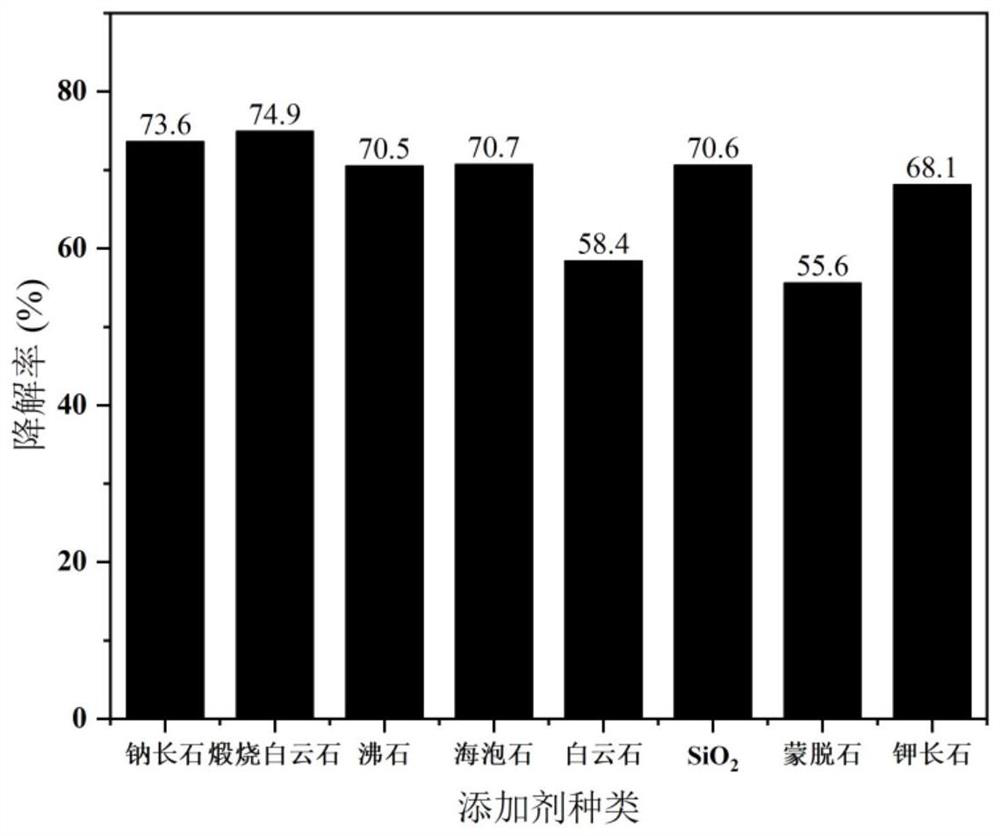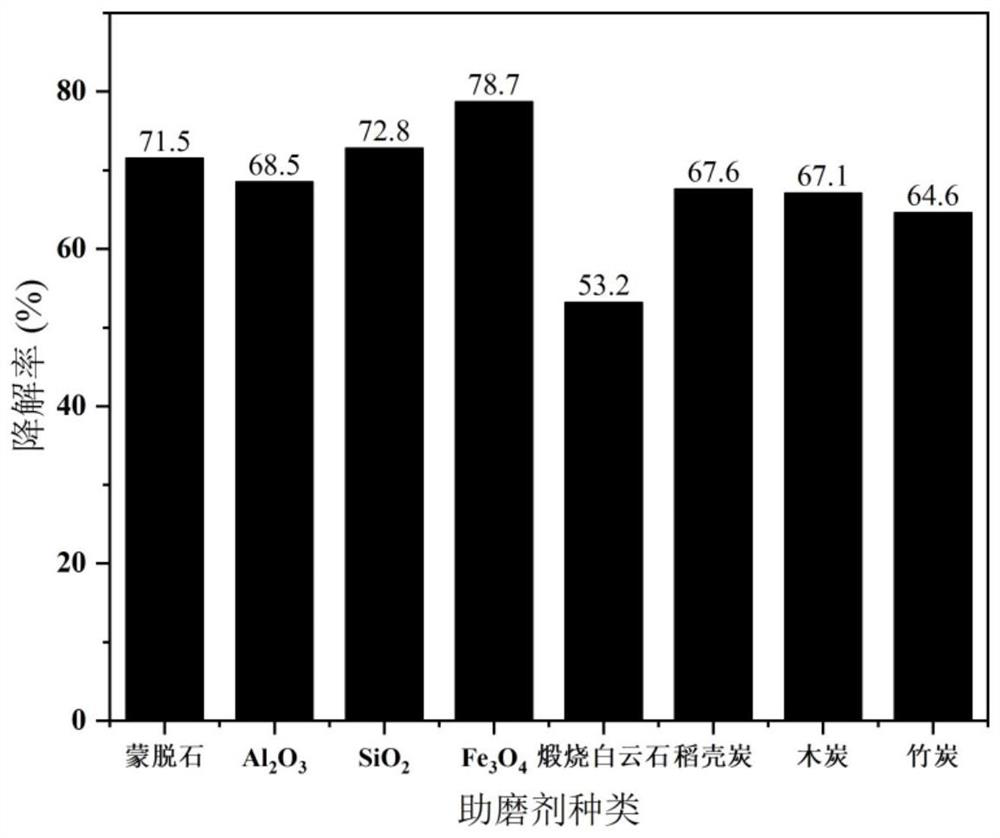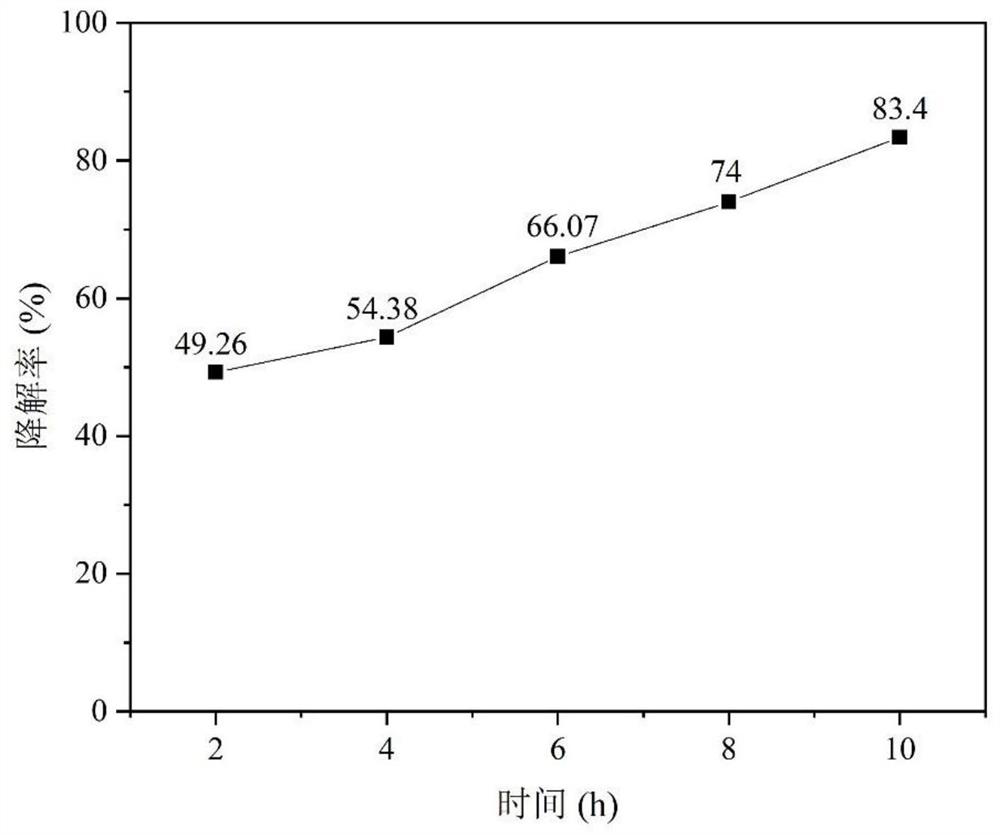Method for repairing hexachlorobenzene contaminated soil through mechanochemistry
A polluted soil, mechanochemical technology, applied in the field of polluted soil remediation
- Summary
- Abstract
- Description
- Claims
- Application Information
AI Technical Summary
Problems solved by technology
Method used
Image
Examples
Embodiment 1
[0025] Example 1 Preparation method, detection and analysis of simulated polluted soil
[0026] 1 Preparation of simulated contaminated soil:
[0027] Grind the naturally air-dried soil (moisture content about 3.5%) and pass through a 100-mesh sieve, place the sieved soil in a brown wide-mouth glass bottle, and dissolve a certain amount of hexachlorobenzene (purity is 99%) In acetone solvent, fully mix the two to prepare 100mg / kg simulated contaminated soil sample 1, and place it in a cool and ventilated place for aging. Three sampling test results can be used within 100±5mg / kg. Configure 10mg / kg simulated polluted soil sample 2 in the same way.
[0028] 2 Analysis and detection of residual hexachlorobenzene in soil:
[0029] Take 1g of soil and place it in a 250ml glass beaker, add 50ml of acetone and n-hexane mixed extractant (the volume ratio of acetone and n-hexane is 1:1), and extract by ultrasonic at 500W ultrasonic frequency for 30min, repeat twice, mix the extract, ...
Embodiment 2
[0034] The influence of embodiment two different additives on the degradative effect of hexachlorobenzene in soil
[0035] In this embodiment, the ball mill used is an omnidirectional planetary ball mill, the ball mill pot and balls are made of zirconia, and the ball ratio (mass ratio) It is 1:1; the material ratio refers to the mass ratio of adding hexachlorobenzene-contaminated soil to the additive; the ball-to-material ratio refers to the mass ratio of the ball mass to the ball milling material (including additives and contaminated soil).
[0036] The specific method for degrading hexachlorobenzene in the soil by the mechanochemical method of the present invention is to use natural mineral powder as an additive to realize the remediation of contaminated soil under the action of mechanical force, so as to reduce the impact on soil properties. Natural mineral powder has rich pore structure and active adsorption reaction sites, such as albite, calcined dolomite, zeolite, sepi...
Embodiment 3
[0041]Natural mineral powder has complex components and many impurities. When it is used as a single additive, the effect is limited, and it needs to be supplemented with a grinding aid with certain reactivity. The combined use of main grinding agent and grinding aid can not only improve the effect, but also reduce the amount of additives and reduce the reaction time. In the case of albite as the main grinding agent, the effects of different grinding aids on the degradation of hexachlorobenzene in soil were explored. The added grinding aids included: montmorillonite, Al 2 o 3 , Fe 3 o 4 , SiO 2 , calcined dolomite, rice husk charcoal, charcoal, bamboo charcoal, soil sample 1 was used as the simulated soil. Set the ball milling process parameters as follows: the ball milling time is 2h, the rotation speed is 550rpm, the ball-to-material ratio is 20:1, the material ratio is 10:1, and the mass ratio of ball milling main agent to auxiliary agent is 5:1. After ball milling, th...
PUM
 Login to View More
Login to View More Abstract
Description
Claims
Application Information
 Login to View More
Login to View More - R&D
- Intellectual Property
- Life Sciences
- Materials
- Tech Scout
- Unparalleled Data Quality
- Higher Quality Content
- 60% Fewer Hallucinations
Browse by: Latest US Patents, China's latest patents, Technical Efficacy Thesaurus, Application Domain, Technology Topic, Popular Technical Reports.
© 2025 PatSnap. All rights reserved.Legal|Privacy policy|Modern Slavery Act Transparency Statement|Sitemap|About US| Contact US: help@patsnap.com



